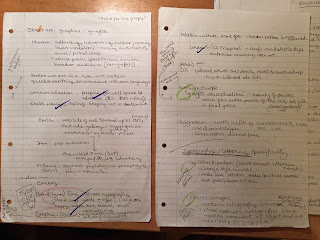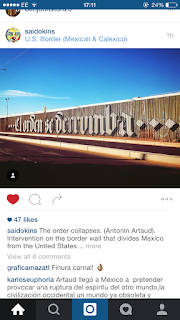The practical investigation as part of my context of practice module outlines the appreciation of street art of a positive nature. The survey I took in Leeds city centre gathered data from the people in the streets of Leeds, which encompasses my target audience by not being rooted to a specific age bracket. The feedback I gained from this led me to believe that people generally notice street art, as opposed to graffiti, as a positive part of the city's visual space.
One downfall of the project is that the spirit of illegally creating art is lost with the time taken to create each piece, however bringing back the element of painting on the street is a factor that engages the public in curiosity and interest in something unusual. When creating one of the pieces "Joy" I was approached by a man who had taken an interest in what I was doing, noticing the similarities to sign writing and the graphic design influence. This is a positive response to the work I created on the street - if one person noticed and spoke to me about it, I imagine there were many others that observed the 'live art' on the street. Leaving the pieces in the place after I'd finished would allow more people to see it as a stand alone piece, artist not involved. This would have a greater sense of visual ephemera seen unrelated with the production and process.
Another problem is the lack of relevant site specificity in my practical pieces. Although the idea is that people can rearrange or take the designs, it would have been better if I'd written messages that could be placed in a suitable context, for example, writing something about the art of conversation next to a phone box. The text reads quite broadly targeted messages, so maybe placing them where I did would be the same as anywhere else, as long as it's accessible to the audience in a place that will be seen regularly. It was a problem that the boards needed to be placed on a ledge or stood up against something - an issue which painting directly on to the wall surpasses.
Out of the main woodblock and board pieces I did, when I returned to the site days later they were no longer there, which in my opinion is a positive response to the artwork. Not knowing where they will have ended up is an added bonus - they may have been disposed of or taken to be thrown away, but either way someone will have had to physically engage with the work and what I would hope, read and been inspired by the messages on it.
Over the past few months this practical investigation and the research I undertook for the written piece has given me a much wider knowledge of the reasoning behind street art and graphic design for the public eye - when not used as a commercial tool. Experimenting with different styles has developed my practice of hand drawn typography and lettering, and given me a lot more scope for what I could produce in terms of abstract typographic design as well as composition and visual aesthetic of letterforms.
I intend to continue with this project by regularly leaving small pieces of hand drawn or painted artwork in areas of Leeds, and wherever else I visit. The blocks of wood worked best for me, although small in scale, the idea of someone being able to physically take it reinforces the sense of "free art" and this has positive connotations itself.























































